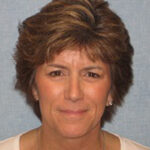Chris McCormick Pries, ARNP
Catholic Heath Today

I am a nurse practitioner and I love my job! As a 12-year-old, dreaming of being a nurse, I never knew the interesting journey I would take to fulfil my dream of “helping people.”
The personal transformation that comes with being a nurse practitioner (NP) and the meaningful existence it creates cannot be underestimated. The opportunities to serve our brothers and sisters, to be present at the most significant and frequently the most challenging points in the life journey of our patients, enriches our lives and theirs.
The story of nurse practitioners begins with public health nurse Loretta Ford, living in Boulder, Colorado, in the 1950s. She toted supplies around the community, setting up clinics in churches, school and storefronts. She was concerned that her patients struggled to access primary care.
Ford believed that if nurses had specialized training they would be more effective in meeting their community’s needs. She wanted nurses to be able to make their own decisions about the health status of their patients rather than rely so heavily on the physician.
At the same time, physicians across the country had begun to unofficially mentor and collaborate with experienced nurses, teaching them to increase their roles within their medical practices. Additionally, American medicine was becoming highly specialized, with growing numbers of medical students moving into more economically and socially lucrative specialty practices. The general practitioner, long a staple for primary care in suburban and rural communities, was slowly disappearing from the health care landscape. The demographics of the American public were also changing, marked by an aging population and an increase in chronically ill adults and children.
In 1965, Ford and physician Henry Silver partnered to start the nation’s first nurse practitioner program at the University of Colorado School of Medicine and Nursing. The new program’s goal was to expand the role of the public health nurse with an emphasis on family health, disease prevention and health promotion. Other pioneers, at the University of Kansas and the University of Rochester, quickly followed. The U.S. Public Health Service recognized the need to train theses nurses and its Division of Nursing began awarding traineeships to individuals applying to these programs. I was a lucky awardee in 1974!
Initially, pushback came from the nursing and medical community. Nursing leaders were concerned the nursing role was becoming “ambiguous.” Physician organizations opposed the concept, arguing that nurses should not function without direct physician supervision. These first nurses who became nurse practitioners were courageous trailblazers. They entered the educational program without any assurance of finding a job after they completed it. These students knew they must be highly competent and able to satisfy all physician and patient critics.
By the late 1970s, nurse practitioner education had moved into graduate programs and by 1981, most states required graduate degrees for nurse practitioner practice. In response to the scientific knowledge explosion, programs kept adding new courses, expanding their length and credit loads.
As early as 1974, the American Nurses Association (ANA) was interested in credentialing nurses and nurse practitioners as a way of showing the general public these professionals had achieved demonstrated expertise over and above licensure requirements. Currently, when nurse practitioners graduate, they must take a national exam through the American Nurses Credentialing Center that certifies them to practice in their specific specialty. Once they receive board certification and obtain their state licensure, they can legally practice as a nurse practitioner. Certification must be renewed every five years.
While faculty in nursing programs were refining and standardizing the educational requirements, NPs were working to define legislatively the advanced practice nursing role in each of the 50 states. Through the tireless work of the early pioneers, tremendous effort was expended to pass new nurse practice acts and to obtain a degree of prescriptive authority in all 50 states and the District of Columbia by 1999.
Real support for the role came after Mary O. Mundinger, Dr. P.H., of Columbia University School of Nursing, published her study comparing the practices of nurse practitioners and physicians in primary care in the Jan. 20, 1994, issue of the New England Journal of Medicine. In summary, she reported both physicians and nurse practitioners see patients, elicit data, reach diagnostic conclusion and decide about treatment, but bring a different expertise and framework for decision-making. Remarkably, similar outcomes were measured regarding quality, competence and patient satisfaction.
The best model for delivery of care with nurse practitioners and physicians is collaborative practice. In this structure, nurse practitioners are responsible for the diagnosis and management of less complex illnesses and provide the education, counseling and management of disease prevention and health promotion. Nurse practitioners have a good record of knowing when to refer. The physician will continue to be the primary professional providing diagnosis and treatment in complex cases and managing critical and unstable medical conditions.
Currently, more than 325,000 nurse practitioners are licensed in the U.S. As an NP who has practiced in the community for 46+ years, I continue to be blessed, to love my job, and remain proud of the role and accomplishments that nurse practitioners have made in the delivery of health care.
(Chris McCormick Pries is an Advanced Registered Nurse Practitioner and a health minister at St. John Vianney Parish in Bettendorf. She retired as clinical director of Vera French CMHC, Davenport, in 2020.)











